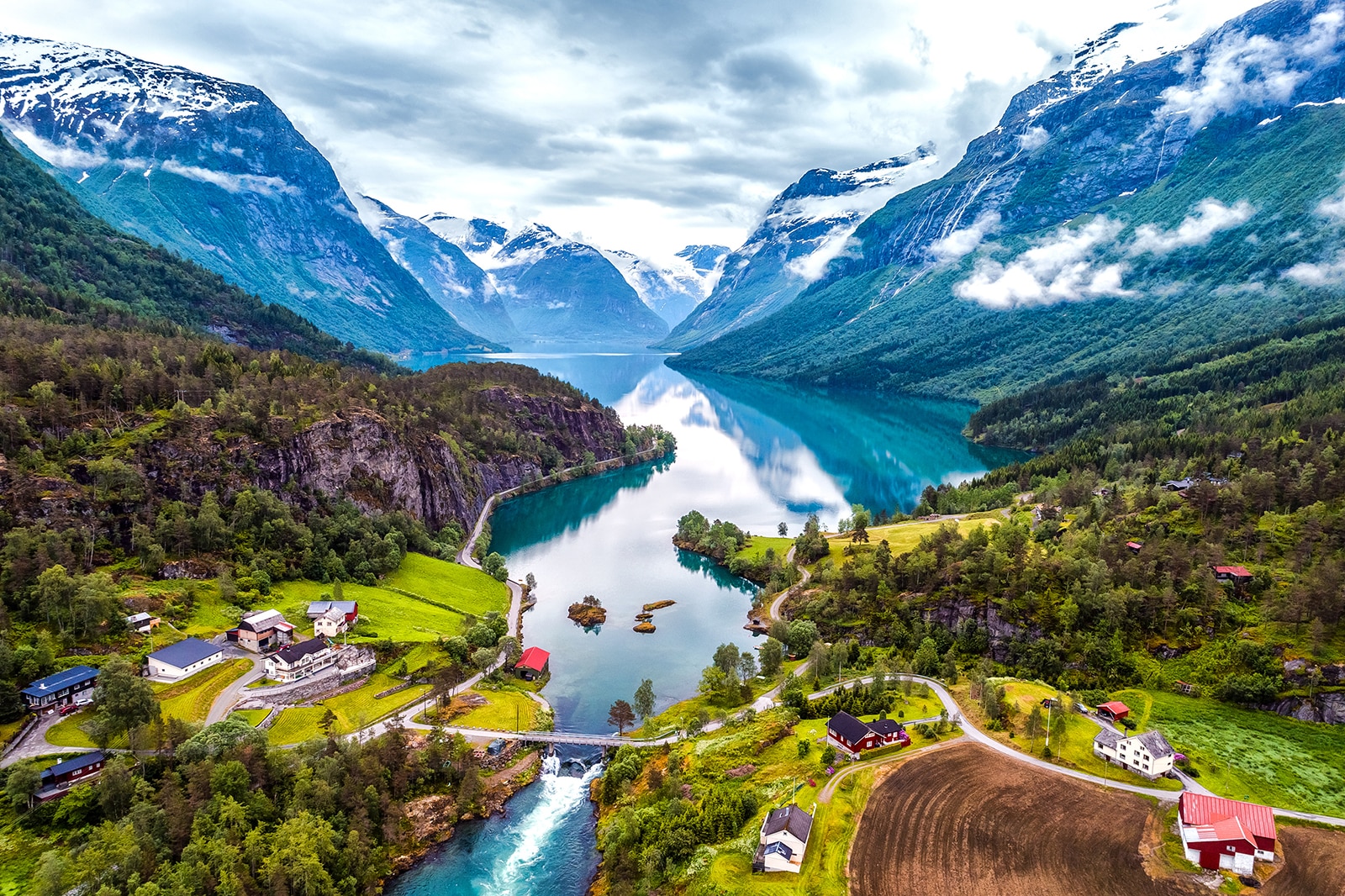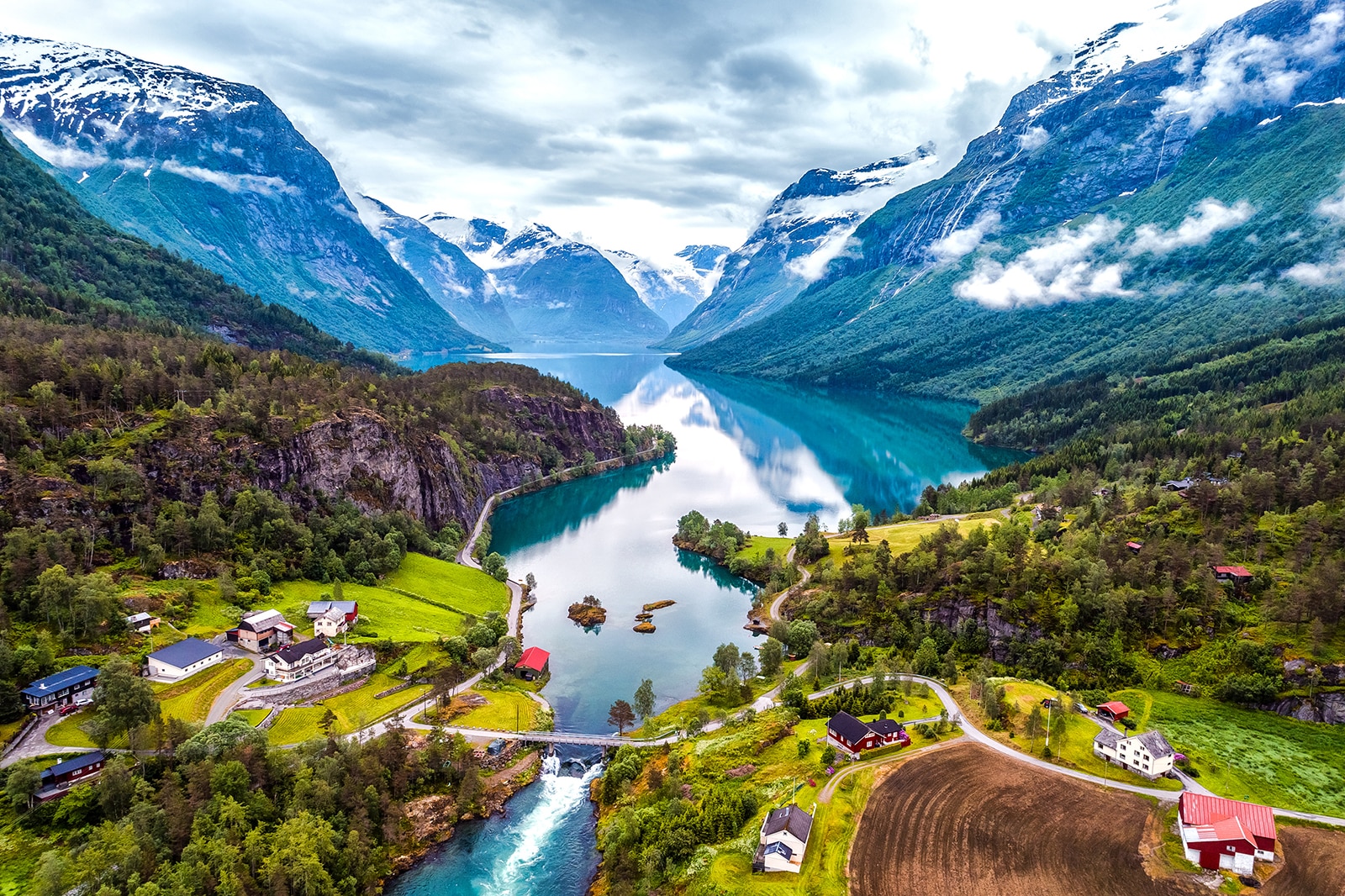
Norway, a land sculpted by glaciers and kissed by the Arctic sun, beckons with its breathtaking natural beauty, rich history, and vibrant culture. From the dramatic fjords that carve through its coastline to the ethereal dance of the Northern Lights in the polar night, this Scandinavian gem offers an unforgettable tapestry of experiences. Whether you’re an intrepid adventurer, a history buff, or simply seeking solace in nature’s grandeur, Norway has a captivating story to tell.
A Glimpse into Norway’s Storied Past
Norway’s history is as dramatic and enduring as its landscapes. For millennia, it has been shaped by its geography and its people’s resilience. The Viking Age (8th to 11th centuries) stands as a monumental chapter, a time when Norse seafarers, renowned for their seafaring prowess and warrior spirit, explored, raided, and settled across Europe. Their legacy is etched in archaeological sites, sagas, and even the very names of places. The Viking Ship Museum in Oslo offers a poignant glimpse into this era, housing remarkably preserved Viking ships.

Related Articles about Norway: A Symphony of Fjords, Northern Lights, and Viking Lore:
- Morocco: A Traveler’s Guide to the Kingdom of a Thousand Colors
- Egypt: A Journey Through Timeless Wonders
- Buenos Aires: A Whirlwind of Tango, History, and Passion – Your Ultimate Travel Guide
- The Heart of Africa: An Unforgettable Journey Through Kenya
- Cairo: A Timeless Tapestry of Ancient Wonders and Modern Marvels
Following the Viking Age, Norway experienced periods of union with Denmark and Sweden. The Kalmar Union (1397-1523), though ultimately dissolved, left its mark on the cultural landscape. The 19th century witnessed a surge of national romanticism, a movement that celebrated Norwegian identity, folklore, and natural beauty, inspiring artists, writers, and musicians. This period culminated in Norway’s full independence in 1905.
More recently, Norway has emerged as a significant player on the global stage, particularly in its commitment to environmentalism, social welfare, and diplomacy. Its vast oil reserves have contributed to a prosperous nation, yet a strong emphasis remains on sustainable development and preserving its pristine environment.
Top Attractions: Where Nature’s Masterpieces Unfold
Norway’s allure lies in its diverse and awe-inspiring attractions, catering to every taste and inclination.
The Fjords: Majestic Waterways Carved by Ice
The Norwegian fjords are undeniably the country’s crown jewels. These UNESCO World Heritage sites are deep, narrow inlets of the sea surrounded by steep cliffs, a testament to the immense power of glacial erosion.
- Geirangerfjord: Often cited as one of the most beautiful fjords in the world, Geirangerfjord is characterized by its dramatic waterfalls, such as the iconic Seven Sisters and Suitor, cascading down sheer rock faces. Boat tours offer unparalleled views, and hiking trails provide opportunities to explore its surrounding heights.
- Nærøyfjord: A narrower and more dramatic fjord, Nærøyfjord is a UNESCO World Heritage site and a true spectacle of nature. Its imposing cliffs and tranquil waters create an atmosphere of profound serenity. Kayaking or taking a ferry through this fjord is an unforgettable experience.
- Lysefjord: Home to the famous Preikestolen (Pulpit Rock) and Kjeragbolten (a boulder wedged between two cliffs), Lysefjord offers breathtaking hikes with panoramic vistas that will leave you speechless.

The Northern Lights: The Aurora Borealis’s Celestial Ballet
Witnessing the Northern Lights is a bucket-list experience for many, and Norway, particularly its northern regions, is one of the best places on Earth to behold this natural phenomenon.
- Tromsø: Known as the "Gateway to the Arctic," Tromsø is a prime location for aurora hunting. Numerous tours are available, taking you away from city lights to optimal viewing spots. The city itself offers cultural attractions like the Arctic Cathedral and the Polaria aquarium.
- Lofoten Islands: While famous for their dramatic coastal scenery, the Lofoten Islands also offer incredible opportunities to see the aurora dancing above rugged mountains and picturesque fishing villages.
- North Cape (Nordkapp): Situated on the northernmost point of mainland Europe, North Cape provides a dramatic backdrop for aurora viewing, with the vast Arctic Ocean stretching before you.
Oslo: The Vibrant Capital
Norway’s capital city is a dynamic blend of modern architecture, historical sites, and green spaces.
- Vigeland Sculpture Park: This unique park showcases over 200 sculptures by Gustav Vigeland, depicting the cycle of human life.
- The Royal Palace: Witness the changing of the guard and explore the opulent rooms of the monarch’s official residence.
- Akershus Fortress: This medieval castle and fortress offers a glimpse into Norway’s past and provides stunning views of the Oslofjord.
- Museum Island (Bygdøy): Home to the Viking Ship Museum, the Fram Museum (dedicated to polar exploration), and the Norwegian Folk Museum, this island is a treasure trove of Norwegian history and culture.
Bergen: The Gateway to the Fjords
Nestled between seven mountains and a picturesque harbor, Bergen is a charming city with a rich maritime history.
- Bryggen: This UNESCO World Heritage site is a row of colorful wooden buildings that once housed the Hanseatic League’s trading offices. Wander through its narrow alleyways and soak in the atmosphere.
- Fløyen and Ulriken: Take the funicular or cable car up these mountains for panoramic views of the city and surrounding fjords.
- Fish Market: Experience the lively atmosphere and sample fresh seafood at Bergen’s renowned fish market.
Other Notable Attractions:
- The Atlantic Road (Atlanterhavsveien): An engineering marvel, this scenic route winds its way over islands and islets, offering dramatic coastal vistas.
- Rondane National Park: Norway’s oldest national park, offering stunning mountain landscapes for hiking and exploring.
- Trondheim: A historic city with a magnificent Gothic cathedral, Nidarosdomen, a pilgrimage site for centuries.
Travel Tips for a Seamless Norwegian Adventure
Planning your trip to Norway can enhance your experience significantly. Here are some essential tips:
- Currency: The official currency is the Norwegian Krone (NOK). Credit and debit cards are widely accepted, but it’s advisable to carry some cash for smaller purchases.
- Language: Norwegian is the official language. English is widely spoken, especially in tourist areas, and many Norwegians are fluent.
- Tipping: Tipping is not customary in Norway as service charges are usually included in the bill. However, if you receive exceptional service, a small tip (5-10%) is appreciated.
- Electricity: Norway uses 230V, 50Hz. Plugs are typically Type F (Schuko).
- Respect Nature: Norway’s natural environment is highly valued. Stick to marked trails, dispose of waste properly, and be mindful of wildlife.
- "Allemannsretten" (Everyman’s Right): This principle grants everyone the right to roam freely in uncultivated land, provided it is done responsibly and with respect for private property.
- Book in Advance: Especially during peak season, booking accommodations, popular tours, and train tickets well in advance is highly recommended.
- Pack Layers: Norwegian weather can be unpredictable, even in summer. Pack layers of clothing, including waterproof and windproof outer gear.
Accommodation Options: From Cozy Cabins to Chic City Stays
Norway offers a diverse range of accommodation to suit every budget and preference.
- Hotels: You’ll find a wide array of hotels, from luxurious city hotels to charming boutique establishments and budget-friendly options. Major cities like Oslo, Bergen, and Tromsø have the most extensive hotel selections.
- Rorbuer (Fishermen’s Cabins): Particularly in the Lofoten Islands and other coastal areas, staying in a converted rorbu offers a unique and authentic experience. These traditional cabins provide a cozy and rustic atmosphere.
- Cabins and Cottages (Hytter): Renting a hytte is a popular choice for those seeking self-catering options and a connection with nature. Many are located in scenic areas, perfect for hiking and outdoor activities.
- Hostels: A budget-friendly option, hostels are available in most major towns and cities, offering dormitory beds and private rooms.
- Bed & Breakfasts (B&Bs): For a more personal touch, B&Bs offer a warm and welcoming atmosphere, often with homemade breakfasts.
- Camping: Norway has numerous well-maintained campsites, offering pitches for tents, caravans, and motorhomes. "Wild camping" is also permitted in many areas under Allemannsretten, provided you follow the guidelines.
Transportation: Navigating the Land of Fjords and Mountains
Getting around Norway is an adventure in itself, with a well-developed and scenic transportation network.
- Air Travel: For longer distances, domestic flights are efficient. Airlines like SAS and Norwegian Air Shuttle connect major cities.
- Trains: The Norwegian railway network (Vy) is extensive and offers breathtaking journeys through diverse landscapes. The Bergen Railway (Oslo to Bergen) and the Flåm Railway (a scenic detour from the Bergen Railway) are particularly renowned.
- Buses: Buses are a good option for reaching smaller towns and villages not served by trains. Companies like Nor-Way Bussekspress operate intercity routes.
- Ferries and Coastal Voyages: Crucial for exploring the fjords and islands, ferries are an integral part of Norwegian transportation. The Hurtigruten coastal express is a legendary voyage that sails the entire length of the Norwegian coast, serving as both a ferry service and a scenic cruise.
- Car Rental: Renting a car provides flexibility, especially for exploring remote areas and scenic routes like the Atlantic Road. Be aware of narrow roads, tunnels, and potential toll fees.
- Cycling: Norway is a fantastic destination for cyclists, with dedicated bike paths and scenic routes.
- Walking and Hiking: For many attractions, especially in national parks and around fjords, walking and hiking are the primary modes of exploration.
Best Time to Visit: Chasing the Sun or the Aurora
The "best" time to visit Norway depends entirely on what you wish to experience.
- Summer (June – August): This is the most popular time to visit. The weather is generally mild and pleasant, with long daylight hours (midnight sun in the north). It’s ideal for hiking, exploring fjords, and enjoying outdoor activities. However, expect larger crowds and higher prices.
- Spring (April – May): As the snow melts, Norway bursts into bloom. The days get longer, and it’s a beautiful time to visit before the summer rush. Some hiking trails might still be closed due to snow at higher elevations.
- Autumn (September – October): This season offers stunning fall foliage, fewer crowds, and the first chances to see the Northern Lights in the north. The weather can be crisp and cool, with a higher chance of rain.
- Winter (November – March): This is the prime season for experiencing the magic of the Northern Lights. Snowfall transforms the landscapes into a winter wonderland, perfect for skiing, snowboarding, dog sledding, and other winter sports. Daylight hours are very short, especially in the north.
In Conclusion:
Norway is a land of unparalleled natural beauty and rich history, offering a diverse range of experiences that will leave an indelible mark on your soul. From the majestic fjords and the ethereal Northern Lights to the charming cities and the echoes of Viking lore, this Scandinavian nation promises an adventure that is both invigorating and profoundly inspiring. Whether you seek the thrill of the wild or the serenity of the sublime, Norway awaits, ready to unveil its captivating symphony of wonders.





